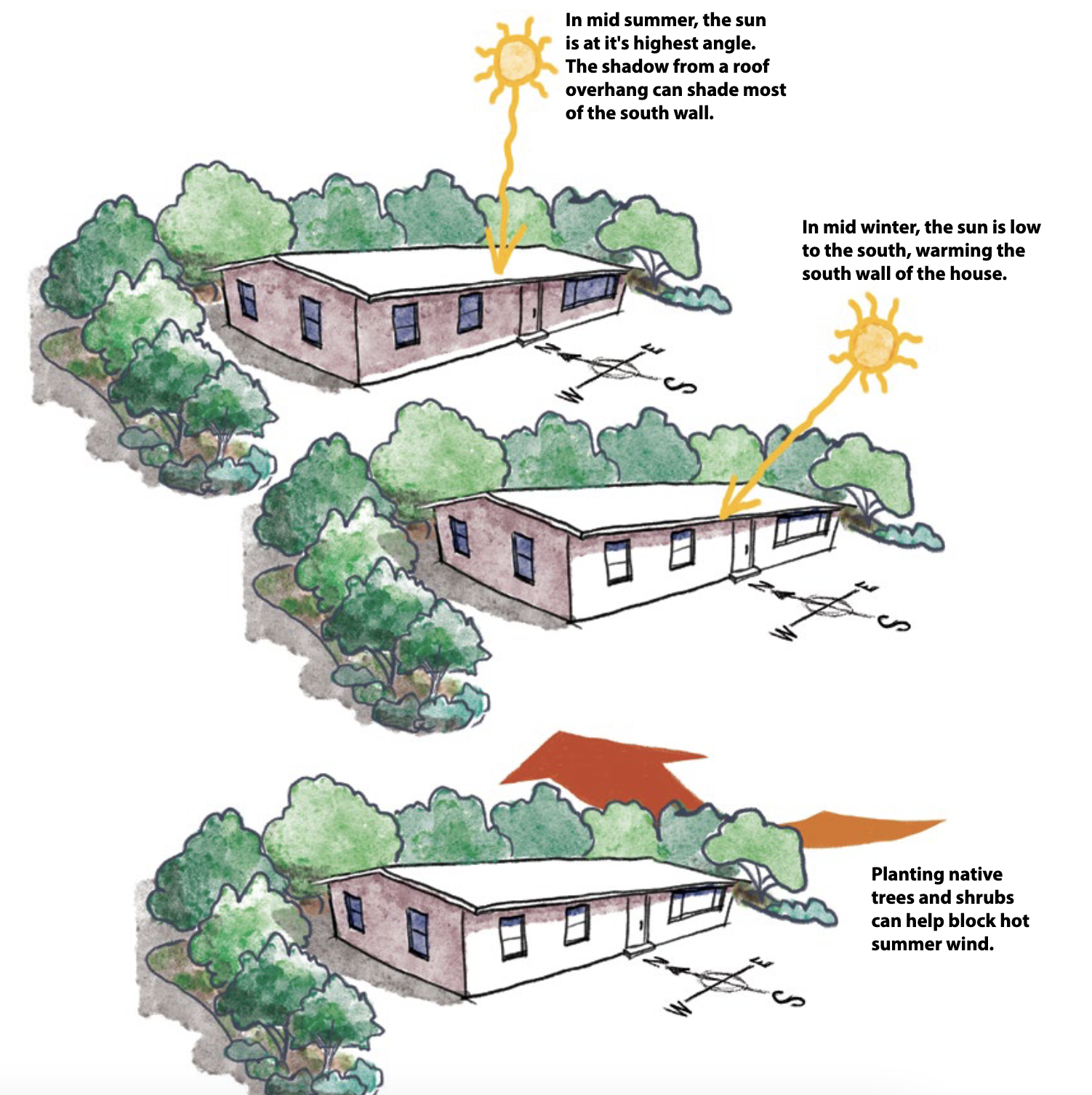How we design our landscapes has a big impact on the temperature of our spaces. Choose a few of these cool down strategies to create your own micro-climate.
Factors that Affect Urban Microclimates
Sun
- Cool Down: Understand the sun’s seasonal angles and design buildings and gardens to utilize passive heating and cooling.
- Heat Up: Disregard the sun’s seasonal angles and position buildings and patios to absorb hot summer sun and block out winter sun.
Vegetation
- Cool Down: Create dense vegetated areas and native forests to maximize natural evaporative cooling.
- Heat Up: Just plant cactus or plant vegetation sparsely.
Groundcover
- Cool Down: Use natural groundcovers, like woody mulch or native plant groundcovers.
- Heat Up: Use lots of hardscapes that have high thermal mass, like concrete, asphalt, brick pavers, and gravel or rock mulch.
Water
- Cool Down: Build rainwater harvesting features to capture and infiltrate rainwater in soil and naturally cycle rainwater in plants.
- Heat Up: Let rainwater run off surfaces, become stormwater, and be lost to evaporation.
Wind
- Cool Down: Strategically grow plants to buffer winds and create shelter from hot, dry winds.
- Heat Up: Create open, sparse landscapes that let winds blow unobstructed.
Built Environment
- Cool Down: Use materials that reflect the sun's rays and orient structures to create shade for people or plants.
- Heat Up: Use materials that absorb the sun's rays and re-release at night; orient structures to reflect heat into spaces with people or plants.
